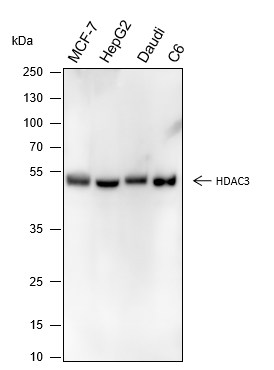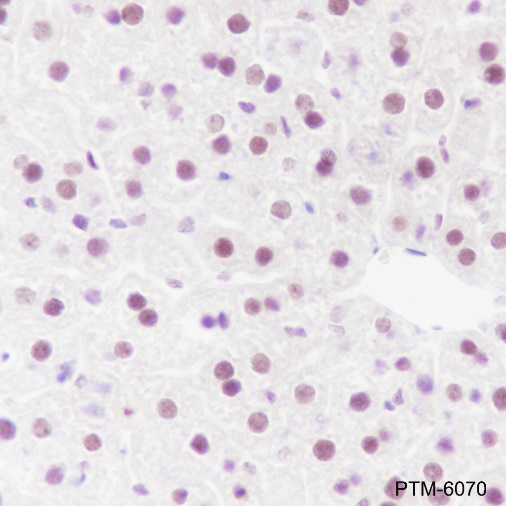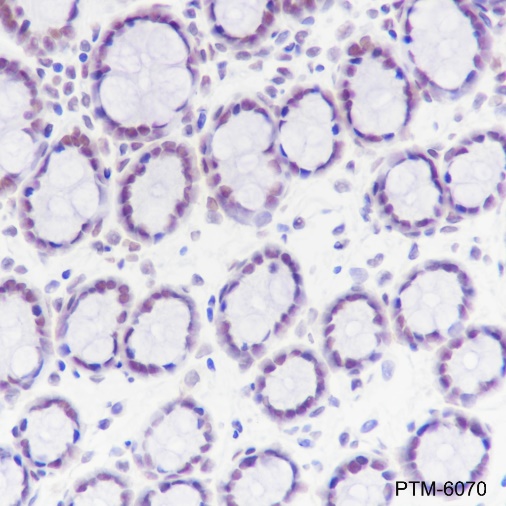Background
Histones are highly alkaline proteins that package and order DNA into structural units called nucleosomes, which comprise the major protein component of chromatin. The posttranslational and enzymatically mediated lysine acetylation and deacetylation of histone tails changes the local chromatin structure through altering the electrostatic attraction between the negatively charged DNA backbone and histones. HDAC3 is a Class I member of the histone deacetylase superfamily (comprising four classes based on function and DNA sequence homology) that is recruited to enhancers to modulate both the epigenome and nearby gene expression. HDAC3 is found exclusively in the cell nucleus where it is the sole endogenous histone deacetylase biochemically purified in the nuclear-receptor corepressor complex containing NCOR and SMRT (NCOR2). Thus, HDAC3 unlike other HDACs, has a unique role in modulating the transcriptional activities of nuclear receptors.
Cellular location
Cytoplasm, Nucleus





